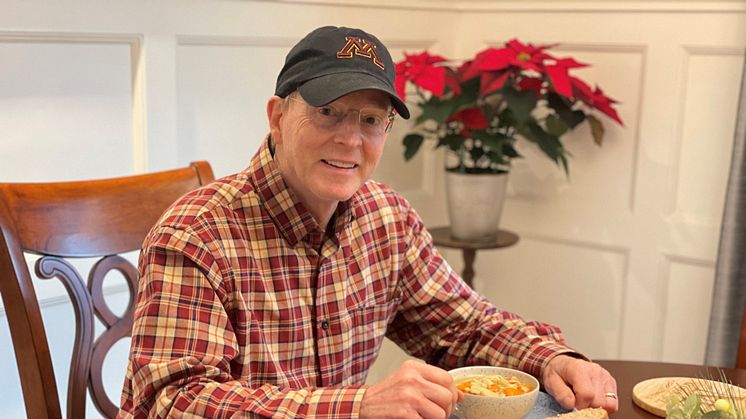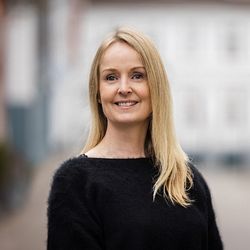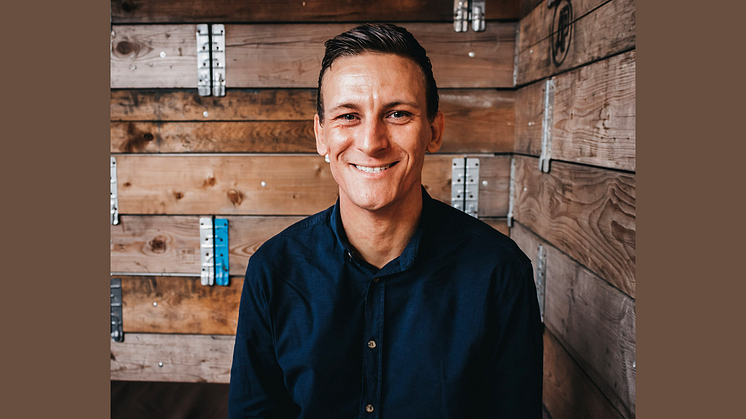
Nyhed -
Christmas Special: Mød Dr. Len Marquart
Mød en af vores særlige fuldkornsvenner Dr. Len Marquart fra USA - i dette Christmas Special interview. Læn dig tilbage i stolen og læs om Dr. Len Marquarts dedikerede og inspirerende arbejde for at udbrede fuldkorn på tværs af kulturer og ikke mindst i skolemåltidet i USA. Hør også om de amerikanske tradtioner omkring julemaden og hvordan Dr. Len Marquart ser, at fokus på klimaforandringer kan påvirke fuldkornsindtaget.
Dr. Len Marquart is an Associate Professor in the Department of Food Science and Nutrition at the University of Minnesota. Dr. Marquart was also the founder and president of the Grains for Health Foundation (2009-16). The Foundation’s goal was to deliver grain‐based foods that taste good, more closely meet dietary guidelines, and are highly consumed. This public health effort was facilitated by convening scientists, health professionals and policy/regulatory experts, establishing collaborative environments and working toward collective food solutions throughout the grains supply chain. Research conducted by his group – introducing whole‐grain foods into the diets of school children – has been instrumental in establishing approaches for gradually delivering whole‐grain foods through the school meals program. Dr. Marquart’s more recent work focuses on developing the next generation of students and young professonals who have the “Bandwidth” to manage wicked problems, such as increasing whole grain consumption within the context of diverse cultures, communities, and society.
How and when did you start working within whole grains?
During the winter of 1994, I was hired as a Nutrition Scientist at General Mills to work on whole grains and health. My job responsibilities included exploring the science (epidemiology, animal, and clinical work), regulatory and policy issues related to whole grain foods. Our work sparked a renewed interest in whole grains through whole grain science, regulatory work on the whole grain health claim, the initial whole grain definition, and provide research-based evidence supporting the inclusion of whole grain serving recommendations in the 2005 U.S. Dietary Guidelines.
You have done research regarding introduction of whole grain foods in the diets of School children. What is - in your experience - important and what works when you want to introduce whole grains in School meals programs?
Our work (Denise Hauge, Director) through the Grains for Health Foundation (2009-16) focused on gradually introducing whole grains into children’s diets through commonly consumed foods. For example, the level of whole grain contained in such foods as pizza, bread, rolls, wraps, and crackers were gradually increased during the school year allowing small changes to occur over time. This intersector / interdisciplinary effort was undertaken in cooperation with industry, government, non-profits, and academia all working together to develop whole grain foods, set regulations and policy, promote outcomes and benefits and to ensure the program was grounded in evidence-based research. The most important learning was to work closely with school administration, food service directors while continually monitoring the sentiment of the staff and likes and dislikes of children throughout this process. Careful observation, listening, and adapting to what children had to say and what they were doing allowed whole grains to be the ”Easy Choice” in school cafeteria settings.
What is your experience working cross sector to increase awareness and intake of whole grains? (in the Grains for Health Foundation)
We have tended to work independently on whole grain science, regulatory, and policy issues at the expense of “Learning How to Work Together” within the food system, food (eating) environments and in communities. Increasing whole grain consumption is first and foremost a Social, Cultural, and Societal issue. A most important question to consider: What is the social, cultural, and societal framework that people need, want, and desire in order to eat more whole grain foods? Yet, we have not worked hard enough to collectively understand the human condition and practical situations to allow whole grain foods to reach most cultures, communities, and societies in a form people find appealing and want to eat them.
A Holistic and Collective approach within the food system is also necessary to examine the Path and Process whole grains take from seed to fork in growing, preparing, delivery, and consumption. This PROCESS might allow us to collectively See, Think, and Do (How-To) within the food system, as we become more collectively informed about taking our next steps forward. This might allow us to better prepare and deliver whole grain foods that become the ”Easy Choice” within cultures, communities, and in our overall society.
(The whole grain community can no longer work in isolation within our sectors (government, industry, non-profits, academia), disciplines, socio / economic / cultural class independent of time, place, and situations.) If our next step is to focus, prioritize and leverage our collective efforts around culture, communities, and society we might make more progress to increase whole grain consumption. “Learning How to Work Together” seems to be the essence and magic key to increase whole grain consumption. And WE have to get better at meeting people where they’re at when it comes to the introduction of whole grain foods.
Whole grain products are among the most climate friendly foods – how do you think it will affect the intake of whole grains in the years to come? That more and more people are becoming aware of the fact that whole grain products are both healthy and climate friendly
Our recent efforts to address climate change and sustainability have allowed our whole grains community to realize we need to become more aware of sheer complexity in solving “Wicked problems.” As we all know increasing whole grain consumption is certainly a wicked problem. I believe that our focus on sustainability issues serves as an invitation for our whole grains community to learn how to work together in ways that we have not done before. I am optimistic as our young people are rising to the occasion. As one example, a former and current graduate student Keagan Ringling and Melissa Jansma in our group, participated in the 2021 Whole Grain Summit speaking on the topics of whole grain food systems and training our next generation of students and young professionals who can build bridges across cultures, communities and society. Inter-generational cooperation is essential in training and nurturing our next generation of whole grain advocates to more effectively work across sectors and disciplines, while empowering diverse cultures and communities to work together to increase whole grain consumption
What is your best advice to increase whole grain in your daily diet?
Start young, whether it’s the young child learning to like whole grain foods at home or away from home. Modeling whole grain behavior at home allows children to assimilate practices in the near term, yet often carry into their adult lifes as in the case of my not so young kids (adults).
What has surprised you the most – working with whole grains?
While working in the area of whole grains for nearly 30 years, we as a collective whole grains community have not been able to prepare and deliver whole grain foods as the “Easy Choice” in most cultures, communities and societies. Denmark is an exception, whereby the culture, community, and societal views of whole grain foods clearly match the accessible and available whole grain foods Danes love to eat. The concerted efforts put forth by nonprofits, industry, government and academics within Denmark support the necessary infrastructure (food supply, food (eating) environment, and community) for Danes to more easily consume practical, healthier, affordable, and desirable whole grain foods that they freely choose to eat.
Has whole grain become part of the American Christmas and the traditional dishes? Can you tell us about the content of a traditional Christmas dinner in the US?
As I understand the holidays in Denmark, during the days after Christmas rye bread is served as a whole grain food as part of this traditional lunch meal. This is a wonderfully rich tradition, which serves as a cultural, community and societal norm in this Nordic country. However, in the U.S. whole grain is often nonexistent in traditional Christmas meals. Christmas meals very by ethnic origin, and are becoming more diverse. However the stereotypical or traditional American meal might consist of Turkey, Dressing, Mashed Potatoes, Gravy, Dinner Roll, Butter, Pie and Cookies as commonly served items. The Dinner Roll and Dressing are almost always made from refined white flour. By chance a pinch of oatmeal might be included in a pie crust or cookie or a whole grain roll might occasionally appear on the table. Whole grain foods are generally not part of our U.S. culture, community and is not yet a societal norm as it relates to holiday meals.
What is your favorite whole grain products?
Bread is my favorite whole grain product as its versatility allows us to create infinite combinations of foods for any meal or snack at any time of day. Bread is an excellent example of how whole grains can and do serve as the foundation for most food and dishes served in many cultures around the world. By selecting a variety of food groups in combination with whole grain foods and ingredients we can choose to create dishes that meet our international sustainability goals related to health and wellness, economics, environment, and laying within socio-cultural norms for diverse populations.
Thank you Len, and Merry Christmas.



